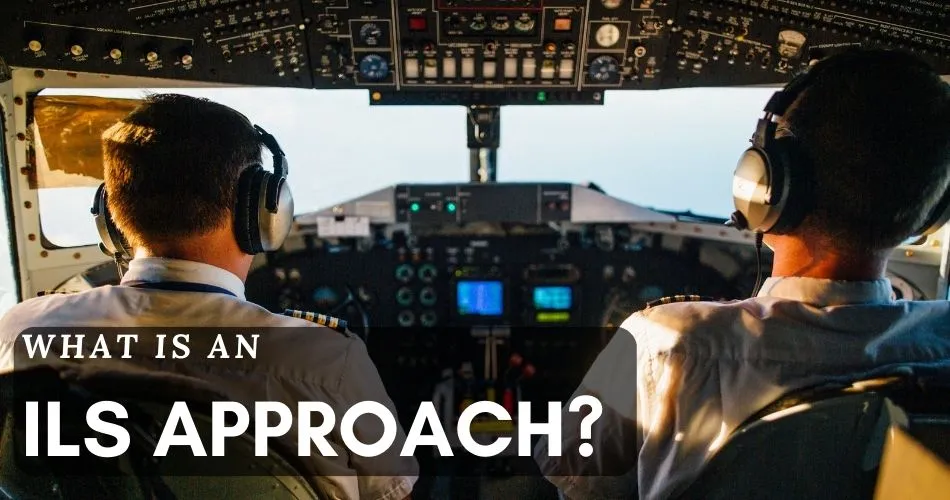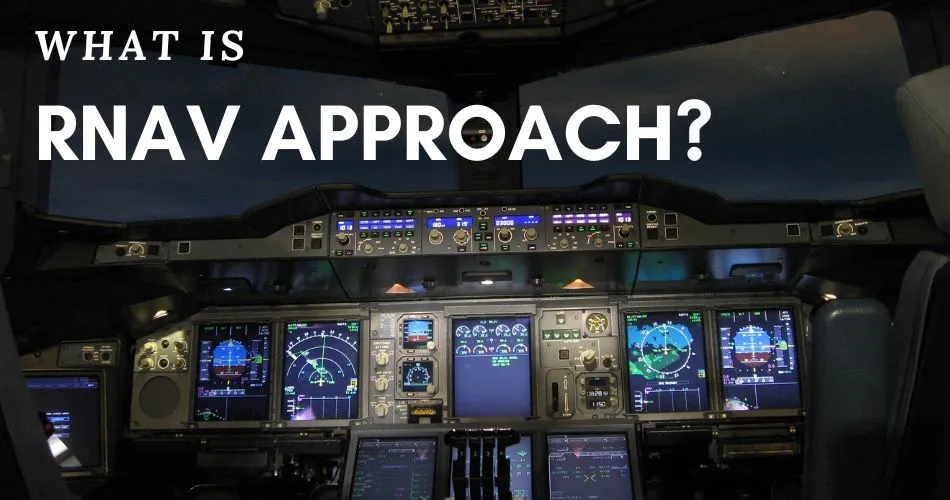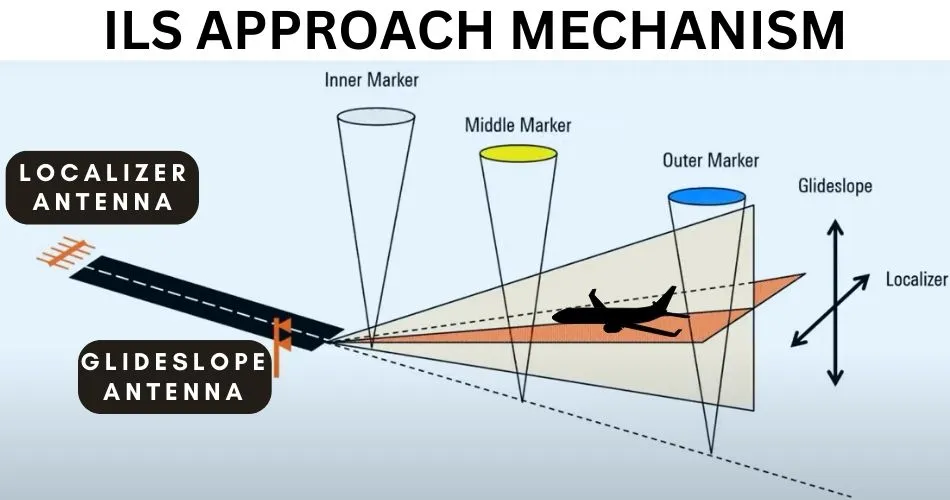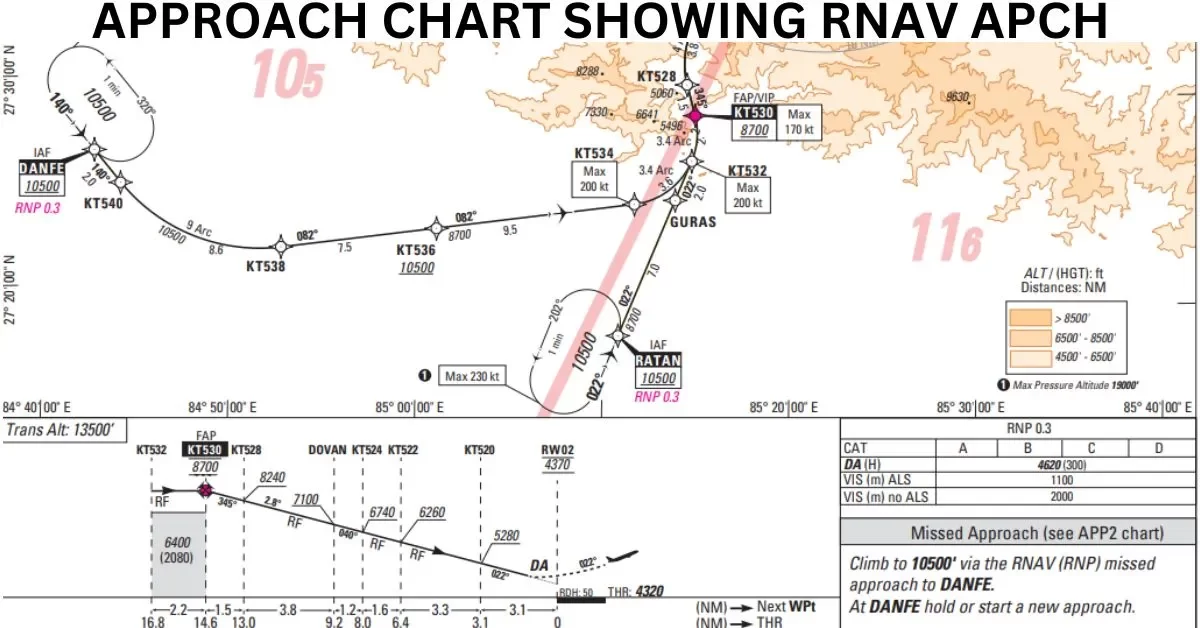ILS (Instrument Landing System), and RNAV (Area Navigation) are important approach systems used worldwide. The majority of aviation accidents and incidents are reported during the approach and landing. To prevent such events, approach systems like ILS, and RNAV/RNP are introduced.
Explore the major difference between ILS and RNAV Approach.
In this article, we will find out the differences between ILS, and RNAV/RNP Approach by comparing the approach type, working mechanism, advantages/limitations, accuracy, requirements, and more.
We advise you to go through the following articles before reading this one so that, you will get detailed knowledge of RNAV, RNP, and ILS Approach.
Table of Contents
What is the difference between ILS and RNAV Approach?
To find out the major differences between ILS, and RNAV Approaches, we will compare key factors including the type of approach system, operating procedures, accuracy, requirements, advantages, and limitations.
Type of Approach System (ILS vs RNAV)
Precision Approach (PA), Non-Precision Approach (NPA), and Approach Procedure with Vertical Guidance (APV) are the type of instrumental approaches used in the aviation industry.
Precision Approach is an instrument approach and landing system that provides lateral and vertical guidance to guide the aircraft to a precise landing.
Non-Precision is also an instrument approach however, it may only use lateral guidance to guide the aircraft toward the landing runway. APV is another instrument approach system that uses vertical guidance.

An Instrument Landing System (ILS) is a precision approach system meaning it provides both lateral, and vertical guidance for a precise approach and landing.
Area Navigation (RNAV) is a non-precision approach system as it provides lateral guidance to help the aircraft navigate from point to point. RNAV can be used with other approaches like APV Baro, and APV SBAS for vertical guidance.

There is also an RNP (Required Navigational Performance) Approach which is an advanced form of RNAV Approach requiring Onboard Performance Monitoring, and Alerting (OBPMA).
ILS vs RNAV Approach Working Mechanism
ILS Working Mechanism
As we discussed above, ILS is a precision approach system that offers horizontal, and vertical guidance for precise approach, and landing. The ILS system uses two radio beams: Localizer (LOC), and Glideslope (GS).

LOC antenna is normally located on the edge of the runway, and it provides lateral guidance to assist the aircraft in maintaining the runway centerline.
Likewise, GS Antenna is located in the aerodrome, and it is responsible for guiding the aircraft vertically for a correct descent path prior to landing.
So, the ILS system works in coordination with ground-based equipment like LOC, GS, Distance Measuring Equipment (DME), and so on.
Pilots use Localizer, and Glideslope frequency to let these components capture the aircraft from the Final Approach Fix, and guide it to the minimum decision height.
RNAV Working Mechanism
RNAV is a non-precision approach system that assists aircraft in flying on any desired flight path without the use of ground-based, and space-based navigation aids.
RNAV uses GPS (Global Positioning System), or GNSS (Global Navigation Satellite System) technology to project a lateral path including a series of waypoints, and legs.

The onboard computer with the Flight Management System (FMS) handles all settings for the RNAV approach. FMS is equipped with sensors, receivers, and computers. The navigation database stored in the FMS provides guidance for RNAV approach procedures.
Once the waypoints, legs, and other important assistance are activated, the flight crew can safely navigate their aircraft from the final approach fix down to the minimum descent altitude within a normal position to land before reaching the missed approach point. The FMS uses GPS and/or DME technology for live aircraft position updates.
ILS vs RNAV Approach, and Landing Accuracy
ILS is the precision approach system and is more accurate than the RNAV approach. The ground-based equipment including Localizer (LOC), and Glideslope (GS) capture the aircraft from the final approach point and perfectly guides it to the minimum decision height which is up to 100 ft.
There are different categories of ILS such as CAT I, CAT II, CAT III A, CAT III B, and CAT III C. The CAT III C ILS is even capable of performing a perfect autoland.
| ILS CATEGORY | DECISION HEIGHT/HEIGHT ABOVE TOUCH-DOWN | RUNWAY VISUAL RANGE (RVR) |
| CAT I | Not less than 200 ft. | Not less than 1,800 ft. |
| CAT II | Not less than 100 ft. | Not less than 1,200 ft. |
| CAT III A | No DH | Not less than 700 ft. |
| CAT III B | No DH | Not less than 150 ft. |
| CAT III C | No DH | No RVR Minimum |
On the other hand, the RNAV is a non-precision approach system that doesn’t use ground-based navigational aids. The major role of the RNAV approach is to guide the aircraft with the waypoints, and legs calculated by the onboard FMS.
RNAV Approach can guide the aircraft to almost 200 ft. above touch-down. However, pilots must be fully alert during the approach.
ILS vs RNAV Requirements
There are various requirements to conduct ILS, and RNAV Approaches. It includes operator certification, pilot training, aircraft compatibility, equipment, and so on.
ILS System requires ground-based navigational aids including Localizer (LOC) Antenna, Glideslope (GS) Antenna, Approach Landing System (ALS), Flight Crew Training, Airport authorization, and more.
Depending on the category of the ILS Approach system, there are specific requirements. For instance, CAT I ILS approach can be executed by instrument-rated pilots while CAT III ILS requires more intensive pilot rating and certification.
RNAV Approach can be conducted with basic navigational training. However, the RNP approach may require some advanced training.
Advantages, and Limitations (ILS vs RNAV)
The major advantage of the Instrument Landing System (ILS) is the ability of the system to precisely guide the aircraft to a safe landing. It is even capable of performing an autoland during adverse weather conditions.
Talking about the downside, ILS may not be available at all airports due to obstacle clearance limits, terrain, mountainous geography, and other complications. Besides, the ILS system is costly for airports as well as airline companies.
An airport needs to be equipped with LOC, and GS antennas along with other essential equipment. Likewise, airline operators must train their pilots, and equip their aircraft with the necessary technologies for ILS Approach.
RNAV/RNP Approach system doesn’t completely require ground-based navigation aids. Those airports without an ILS Approach facility can use the RNAV approach with ease.
Plus, RNAV is a cost-effective approach that allows aircraft to arrive faster at their destination with more direct, efficient, and flexible routes. RNAV makes efficient use of airspace.
The limitation of the RNAV Approach is that it is a non-precision approach system meaning pilots must be alert while navigating, approaching, and landing. The pre-stored navigational database may incur unexpected errors.

Conclusion on ‘What is the difference between ILS and RNAV?’
ILS and RNAV are approach systems used in the flying industry to make the approach and landing safely.
ILS is a precision approach using two components (Localizer and Glideslope) to provide lateral, and vertical guidance whereas RNAV uses GPS or GNSS technology to project a lateral path with waypoints, and legs.
ILS uses ground-based navigational aids, and can even execute autoland. RNAV doesn’t use ground-based aids as it relies on onboard Flight Management System (FMS), and GPS/GNSS.
To conclude, ILS is more accurate than RNAV because it is certified as the standard Precision Approach system by ICAO.





